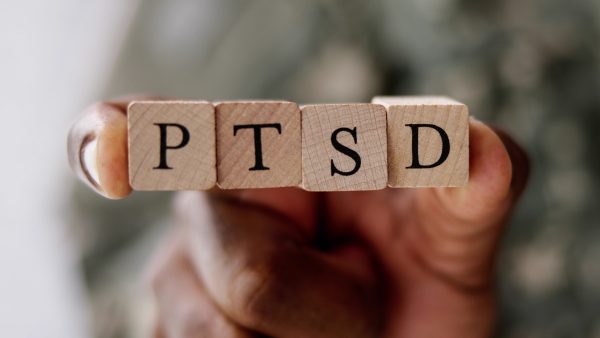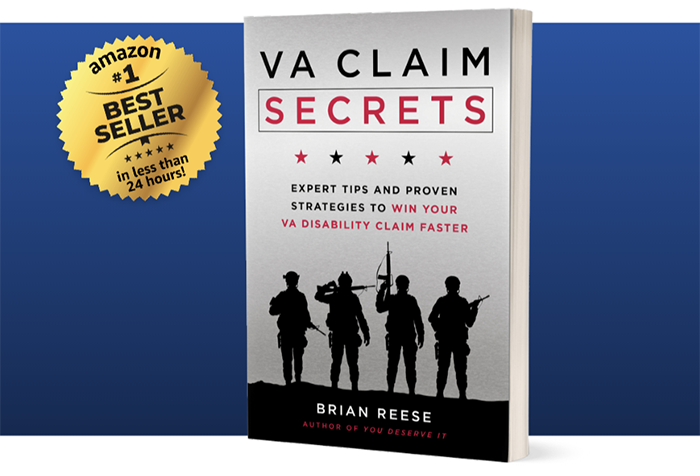The 30 PTSD rating is a tipping point for many veterans in our opinion.
Why?
Because many veterans at the 30 PTSD rating level are underrated because they failed to prove that their symptoms equate to the higher rating criteria under the law, aka the 50 PTSD rating.
So let’s take a minute to explore the law regarding the level of occupational and social impairment required to meet the 30 PTSD rating.
>> Think you deserve a 50 VA disability rating for PTSD? Click HERE to read now.
>> Maybe even a 70 VA disability rating for PTSD? Click HERE to read now.
>> How about a 100 VA disability rating for PTSD? Click HERE to read now.
PTSD is one of the easy VA disability claims to win
According to the easiest VA claims to win data, PTSD is in the top 3 across all groups of veterans.
Here’s some interesting VA data regarding the PTSD ratings for veterans receiving VA disability compensation:
7.1% of all VA disability compensation claim recipients for PTSD have a 10 PTSD rating.
23.7% of all VA compensation claim recipients for PTSD have a 30 PTSD rating.
25.9% of all VA disability recipients for PTSD have a 50 PTSD rating.
28.0% of all VA claim recipients for PTSD have a 70 PTSD rating.
13.1% of all VA disability claim recipients have a 100 PTSD rating.
eCFR Title 38, Part 4, the Schedule for Rating Disabilities lists the general rating formula for all mental disorders, including PTSD.
PTSD is rated on a scale from 0 percent to 100 percent, with breaks at 10 percent PTSD rating, 30 percent PTSD rating, 50 percent PTSD rating, and 70 percent PTSD rating.
The 30 PTSD rating has mild occupational and social impairment criteria and includes symptoms as follows.
Should I apply for PTSD claim? Click HERE to read now.
30 Percent PTSD Rating Criteria
“Occupational and social impairment with occasional decrease in work efficiency and intermittent periods of inability to perform occupational tasks (although generally functioning satisfactorily, with routine behavior, self-care, and conversation normal), due to such symptoms as: depressed mood, anxiety, suspiciousness, panic attacks (weekly or less often), chronic sleep impairment, mild memory loss (such as forgetting names, directions, recent events).”
Whereas the 10 PTSD rating is strikingly less severe, and includes the following symptoms:
10 Percent PTSD Rating Criteria
“Occupational and social impairment due to mild or transient symptoms which decrease work efficiency and ability to perform occupational tasks only during periods of significant stress, or symptoms controlled by continuous medication.”
A big misconception among veterans is that you need to meet ALL the subjective symptoms tied with a certain rating criterion for PTSD in order to get that rating.
This is far from the truth veterans!
The Rating Veteran Service Representative (RVSR) will consider all the evidence of record, and normally will assign the VA rating for PTSD that includes the “preponderance of the symptoms.”
For example, if a veteran has 3 of the symptoms from the 10 rating for PTSD criteria and 5 of the symptoms from the 30 PTSD VA rating criteria, the rating agency shall assign the higher rating, unless evidence of record contradicts this subjective assessment.
The opposite is also true.
For example, if a veteran has 5 of the symptoms from the 10 rating for PTSD criteria and 3 of the symptoms from the 30 PTSD VA rating criteria, the rating agency shall assign the lower rating, unless evidence of record contradicts this subjective assessment.
Two Rules for Rating PTSD VA Claims
According to §4.126, evaluation of disability from mental disorders, the RVSR (VA Rating Official) is required to consider these two rules:
(1) When evaluating PTSD, the rating agency shall consider the frequency, severity, and duration of psychiatric symptoms, the length of remissions, and the veteran’s capacity for adjustment during periods of remission.
The rating agency shall assign an evaluation based on all the evidence of record that bears on occupational and social impairment rather than solely on the examiner’s assessment of the level of disability now of the examination.
(2) When evaluating the level of disability for PTSD, the rating agency will consider the extent of social impairment but shall not assign an evaluation solely on the basis of social impairment.
How to File a VA Claim for PTSD
If you think you deserve a VA rating for PTSD, or you think you deserve a higher rating for PTSD, you should read “How to File a VA Claim for PTSD” now.
Become an Insider
We’re Veterans helping Veterans Worldwide™, and since 2016 we’ve helped 10,000+ Veterans just like you INCREASE their VA disability rating!
About the Author

Brian Reese
Brian Reese is a world-renowned VA disability benefits expert and the #1 bestselling author of VA Claim Secrets and You Deserve It. Motivated by his own frustration with the VA claim process, Brian founded VA Claims Insider to help disabled veterans secure their VA disability compensation faster, regardless of their past struggles with the VA. Since 2013, he has positively impacted the lives of over 10 million military, veterans, and their families.
A former active-duty Air Force officer, Brian has extensive experience leading diverse teams in challenging international environments, including a combat tour in Afghanistan in 2011 supporting Operation ENDURING FREEDOM.
Brian is a Distinguished Graduate of Management from the United States Air Force Academy and earned his MBA from Oklahoma State University’s Spears School of Business, where he was a National Honor Scholar, ranking in the top 1% of his class.




